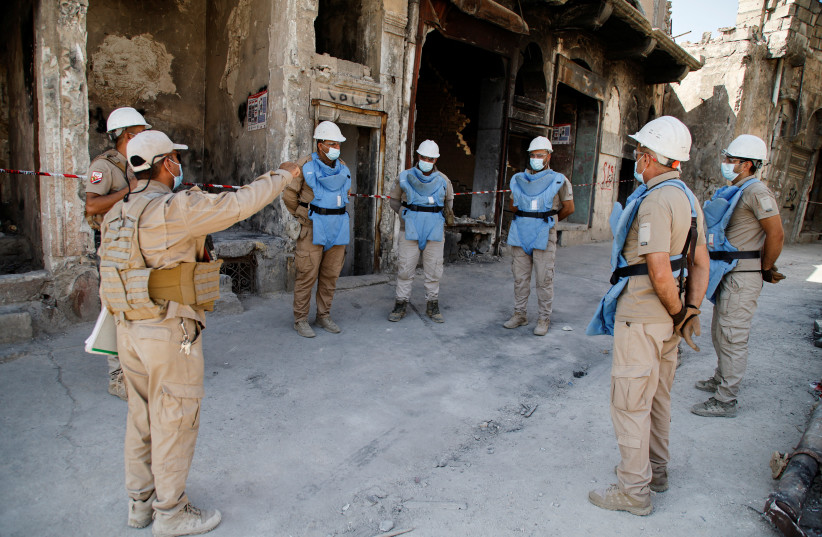On July 9, 2017, the then-prime minister of Iraq arrived in Mosul to celebrate its liberation from ISIS. The city had suffered grievously under the extremists. Its minorities had been purged and expelled. Yazidis had been sold into slavery.
Archaeological sites had been damaged. Cultural history erased. Millions had suffered. This was once a great city, but part of it lay in ruins. Iconic sites such as the Nuri Mosque had been destroyed by ISIS.
Now five years have passed. There is good news. There is an emerging “start-up” scene, says The National in the UAE. The United Nations Educational, Scientific and Cultural Organization is offering vocational training in Mosul.
A group recently graduated from this training. Some of the group were part of the reconstruction of a school, according to UNESCO. There is reconstruction of religious sites, including Christian ones.
In addition, the Sayegh palatial house in the Old City is one of the sites that UNESCO is helping restore. The Old City saw intense fighting during efforts to liberate the city from ISIS. There is still much work to be done. Activists and experts like Omar Mohammed of Mosul Eye have played a key role in bringing the city’s story to an international audience.

Mosul was well-known in the period before ISIS, as an important trading hub and Iraq’s second-largest city. The global jihadist group captured the city in June of 2014 and was able to hold it for three years.
The city is also important because of its locaiton in northern Iraq. It is on the Tigris River and dominates the Nineveh plains, an area that has been a center of the diverse tapestry of Iraq’s past. Jews, Christians, Muslims, Yazidis and many ethnic groups such as Kurds, Shebeks, Turkmen and others have lived in this area. Although groups like ISIS harmed the diversity, some people have returned.
Assessment of the area
THE NORWEGIAN Refugee Council put out a report this week detailing some of the challenges the city faces. “Five years since Mosul's retaking, young people face education, employment crisis,” the group says. “Mosul’s young generation is enduring a brutal legacy left by years of conflict and Islamic State (IS) control, with a lack of jobs and inadequate education opportunities leaving them with little hope for the future, the NRC has said on the fifth Mosul retaking anniversary.”
“Mosul’s young generation is enduring a brutal legacy left by years of conflict and Islamic State"
NRC report
The council says that its analysis of “school data from the current academic year shows that one in three schools in Mosul either need repair or are not fit for use, with 50% of all students enrolled in schools with damaged structures.” NRC’s Iraq Country Director James Munn says that “five years since the city was retaken, the people of Mosul are yet to recover from the many tragedies they have experienced.”
Mosul has faced so many challenges that this may not be surprising.
The report says that dropout rates in school have reached 20%. The report also says that very few students pass final exams in West Mosul, which is the “Right bank” of the city, where the Old City is located. It was damaged in the war, worse than the other side.
“A clear split in future prospects was found in NRC’s interviews with young men and women. Those in school or university, though a few years behind, said they aimed to finish their studies and get a job, mainly in medicine or engineering,” the organization said. The report also says that the latest figures show that 100,000 people from Mosul are displaced.That is much lower than the millions who were displaced back in 2016.
The NRC report is important. It notes that, “according to official figures, in Mosul, 547,322 students study in 808 schools with 16,456 teachers at work," and "10,000 students are enrolled in 36 schools that are not fit for use.” Furthermore, the council provided cash and livelihood assistance to 5,135 people in Mosul, it says.
It is important that the youth see a future of progress and hope, lest they fall into despair and potentially are preyed upon by extremists.
